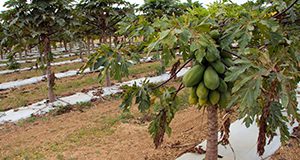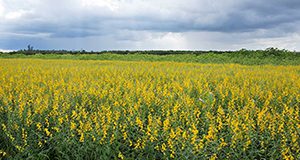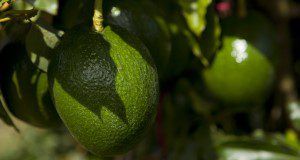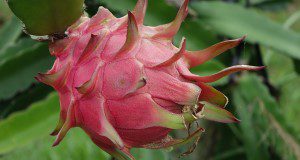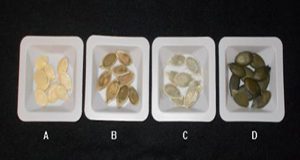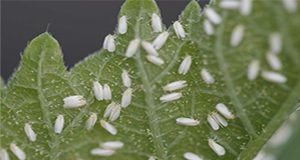Geographic information and geospatial data are vital in many practical fields, including precision agriculture, natural resources management, flood zone mapping and management, and environmental assessment. This 6-page publication introduces publicly available geospatial data, including elevation, land use, soil, satellite imagery, and other thematic maps and GIS software commonly used in spatial analysis. Written by Satbyeol Shin and Young Gu Her, and published by the UF/IFAS Department of Agricultural and Biological Engineering, January 2021.
https://edis.ifas.ufl.edu/ae550
Tag: Tropical Research and Education Center
Programacion de Riego Basado en el Metodo de Evapotranspiracion Para Papaya (Carica papaya) en Florida
La papaya es un importante cultivo frutícola que se cultiva en el sur de Florida con un área estimada de 356 acres. Este documento se centra en las técnicas de programación de riego basadas en ET para la papaya en las condiciones de Florida. Written by Haimanote K. Bayabil, Jonathan H. Crane, Kati W. Migliaccio, Yuncong Li, Fredy Ballen, and Sandra Guzmán, and published by the UF/IFAS Department of Agricultural and Biological Engineering, November 2020.
https://edis.ifas.ufl.edu/ae547
Questions and Answers for Using Sunn Hemp (Crotalaria juncea L.) as a Green Manure Cover Crop
This 4-page document synthesizes information about the warm-season cover crop, sunn hemp. It addresses frequently asked questions for growers and summarizes the expanding body of sunn hemp research. The information is provided so growers in Florida can learn about up-to-date cultivation and management options as well as better understand sunn hemp’s practical uses. Written by Thioro Fall, Ariel Freidenreich, Stacy Swartz, Christopher Vincent, Yuncong Li, and Zachary Brym, and published by the UF/IFAS Agronomy Department, July 2020.
https://edis.ifas.ufl.edu/ag443
Recommendations for the Detection and Mitigation of Laurel Wilt Disease in Avocado and Related Tree Species in the Home Landscape
Avocado trees are a popular choice for homeowners in Florida, with over 600,000 growing in Florida home landscapes. However, avocado trees as well as others in the Lauraceae family are susceptible to laurel wilt disease, which can kill a tree in as few as three weeks. This new 7-page publication of the UF/IFAS Horticultural Sciences Department provides home owners recommendations for identifying and mitigating laurel wilt disease in the home landscape. Written by Jonathan H. Crane, Jeff Wasielewski, Daniel Carrillo, Romina Gazis, Bruce Schaffer, Fredy Ballen, and Edwards Evans.
https://edis.ifas.ufl.edu/hs1358
Stem and Fruit Canker of Dragon Fruit in South Florida
Dragon fruit, also known as pitahaya, pitaya, and strawberry pear, is a group of vine-like, climbing cacti. In south Florida, production of dragon fruit has been steadily increasing since the 2000s, and growers in Florida consider dragon fruit as a potential alternative fruit crop to avocado and citrus, two economically important fruit crops largely impacted by laurel wilt and huanglongbing, respectively. This new 4-page article focuses on the symptomology and epidemiology of stem and fruit canker, a prevailing disease on dragon fruit. Suggested management strategies for the disease are also discussed based on recent studies conducted in south Florida. Written by Cheng-Fang Hong, Shouan Zhang, Romina Gazis, Jonathan H. Crane, and Jeff Wasielewski, and published by the UF/IFAS Plant Pathology Department.
https://edis.ifas.ufl.edu/pp355
The Value of Tropical Plant Diversity
This new 5-page document discusses plant diversity at the UF/IFAS Tropical Research and Education Center, environmental factors and human activities affecting these plants, assemblages of species based on levels of disturbance, human choice, and other factors, and the diverse needs these plants meet. Written by Cliff G. Martin and Zachary T. Brym, and published by the UF/IFAS Agronomy Department, June 2019.
http://edis.ifas.ufl.edu/ag435
Health Benefits of Pumpkin Seed and Nutrition Profile of 35 Pumpkin Accessions
Pumpkin seed is high in oil, protein, and total unsaturated fatty acids and is a popular ingredient in snacks and other foods sold across the country. This 5-page article will discuss the health benefits, production, processing, and nutritional profile of pumpkin seed. Written by Geoffrey Meru, Yuqing Fu, Dayana Leyva, Paul Sarnoski, and Yavuz Yagiz and published by the UF/IFAS Horticultural Sciences Department, November 2017.
http://edis.ifas.ufl.edu/hs1312
Whitefly (Bemisia tabaci) Management Program for Ornamental Plants
Silverleaf whitefly is one of the most notorious invasive arthropods worldwide. It feeds on more than 900 plant species and vectors over 100 plant-damaging viruses. This 10-page fact sheet written by Vivek Kumar, Cristi Palmer, Cindy L. McKenzie, and Lance Osborne and published by the Department of Entomology and Nematology provides management recommendations, strategies for detection and scouting, and advice about control measures for this pernicious pest.
http://edis.ifas.ufl.edu/in1171
What the 2012 Census of Agriculture Is Telling Us about Miami-Dade County
Agriculture is an important contributor to Florida’s economy. Only the tourism industry employs more Floridians. In 2012, agricultural output was estimated at $141.8 billion, accounting for 14.9% of the state’s gross domestic product, and providing employment for 20.8% of the state’s labor force. Monitoring the performance of the sector over time is therefore of critical importance to various stakeholders. This 8-page publication written by Edward Evans and published by the Food and Resource Economics Department focuses on the Agricultural Census data for Miami-Dade County and specifically examines trends over the 15-year period from 1997 to 2012 with the aim of highlighting some of the major trends occurring in the Miami-Dade County agricultural sector. In general, the data show that in spite of challenging times, the agricultural industry has remained important, contributing $604 million to the Florida economy in 2012.
http://edis.ifas.ufl.edu/fe1001
Cost Estimates of Establishing and Producing Thai Guavas in Florida, 2014
The white Thai guava variety, which is very popular in the Asian market, is beginning to expand into mainstream markets. It has quick, high yields, is easily propagated and is tolerant to moisture stress and soil salinity. But even though it offers favorable returns, there has been little information about the cost of production. This 7-page fact sheet identifies inputs, costs, and yields considered to be typical of a well-managed five-acre Thai guava orchard in south Florida. Written by Stella Garcia, Edward A. Evans, and Jonathan Crane and published by the UF Department of Food and Resource Economics, August 2016.
http://edis.ifas.ufl.edu/fe998

